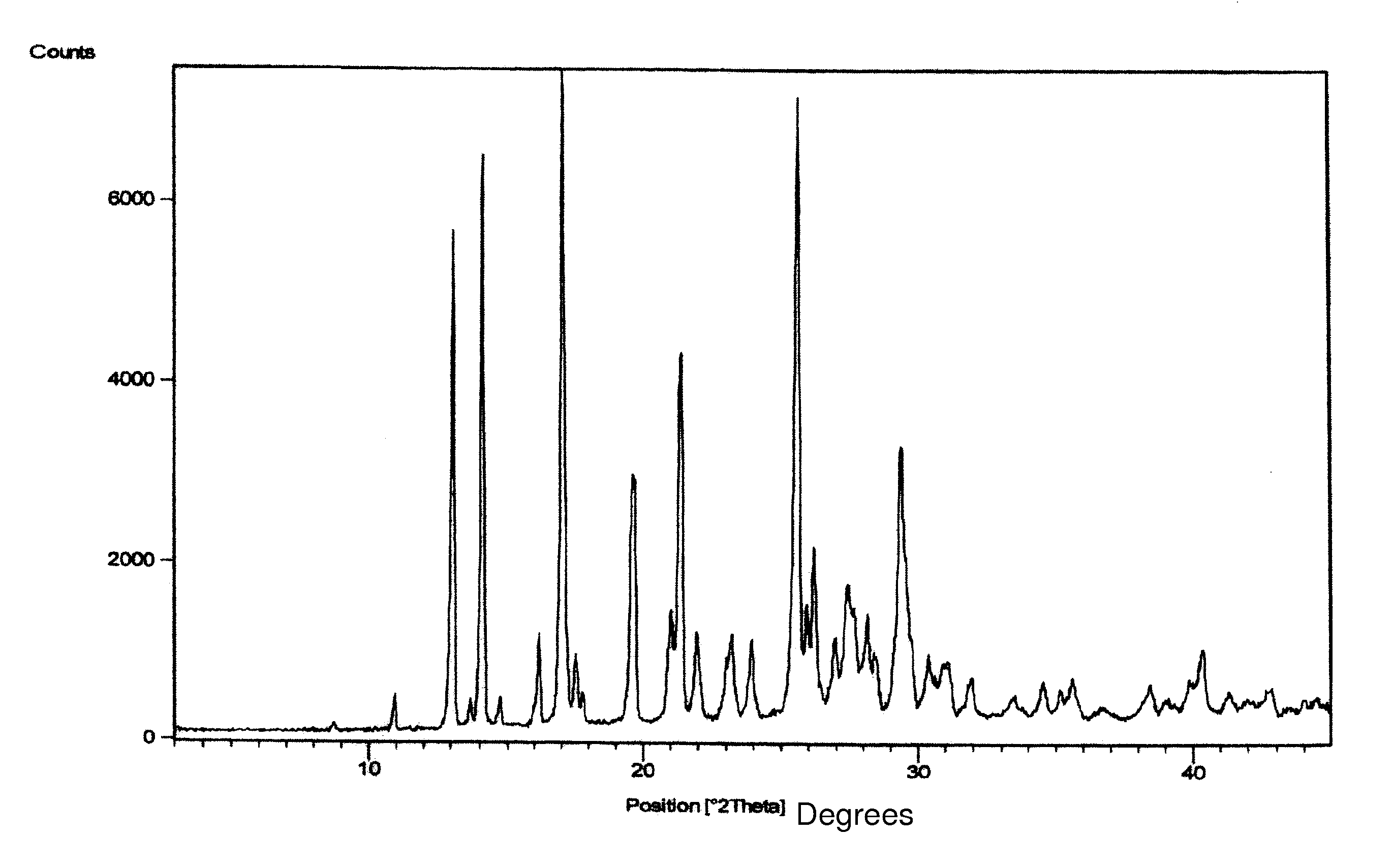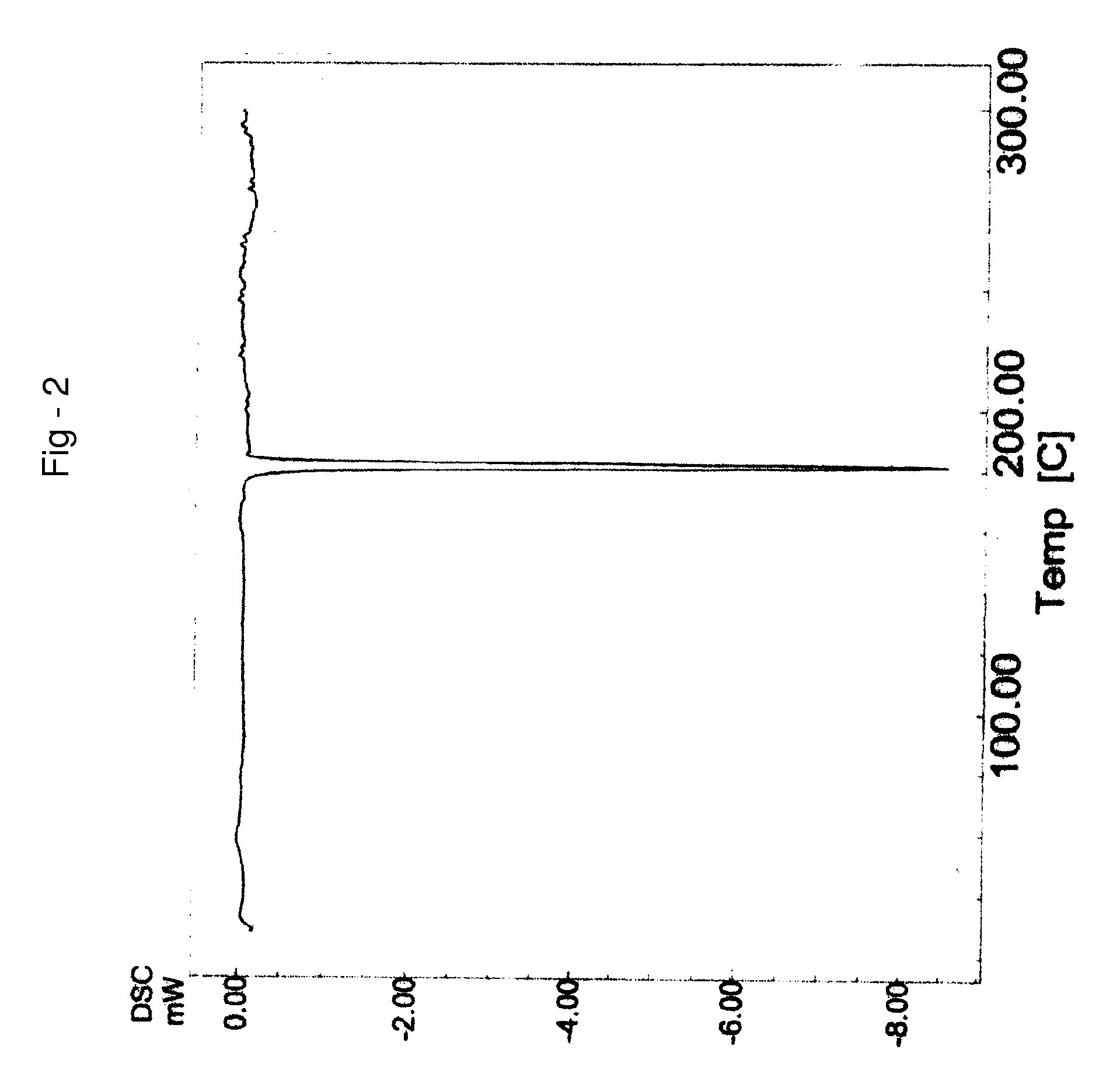Process for preparing letrozole
a technology of letrozole and process, applied in the field of process for the preparation of letrozole, can solve the problems of unsuitable industrial scale manufacturing processes
- Summary
- Abstract
- Description
- Claims
- Application Information
AI Technical Summary
Benefits of technology
Problems solved by technology
Method used
Image
Examples
example 1
PREPARATION OF 4,4′-DICYANOBENZOPHENONE OF FORMULA III
[0115] 100 g of 4,4-dibromobenzophenone were suspended in 1000 ml of N,N-dimethylacetamide (DMA) and stirred for 10 minutes at 25-35° C. 93.2 g of potassium ferrocyanide, 62.5 g of sodium carbonate and 512 mg of palladium chloride were charged to the suspension. The suspension was heated to 95-100° C. and stirred for 6 hours at 95-100° C. Then the reaction mass was cooled to 27° C. and filtered through a celite bed followed by washing the celite bed with 100 ml of N,N-dimethylacetamide (DMA). 2 L of methanol were charged to the filtrate and stirred for 2 hours at 25° C., followed by filtering at 25° C. Methanol was distilled from the filtrate and 1.1 L of water was charged at 25° C. The resultant suspension was filtered followed by washing the solid with 100 ml of water and drying the solid at 58° C. under vacuum for 4 hours, to afford 54 g of title compound with a purity by HPLC of 98.99% and a water content by the Karl Fischer...
example 2
PREPARATION OF 4,4′-(HYDROXY METHYLENE)BISBENZONITRILE OF FORMULA IV
[0116] 200 ml of methanol was taken into a round bottom flask followed by charging 40 g of 4,4-dicyanobenzophenone and stirring for about 10 minutes. 3.28 g of sodium borohydride was added slowly to the above suspension at 0-5° C. followed by stirring at 25-30° C. for 30 minutes, and the formed solution was neutralized with 25 ml of glacial acetic acid to a pH of 6.33. 800 ml of water was charged to the above-neutralized suspension and stirred for 30 minutes, and the precipitate was filtered, washed with 400 ml of water and finally subjected to drying at 55-60° C. under vacuum for 4 hours to afford 40 g of title compound having a purity by HPLC of 99.36% and a water content by the Karl Fischer method of 0.27%.
example 3
PREPARATION OF TOLUENE SULPHONIC ACID BIS-(4-CYANOPHENYL)METHYL ESTER OF FORMULA V
[0117] 250 ml of acetone was taken into a round bottom flask to which was then added 50 g of 4,4-(hydroxymethylene)bis benzonitrile and the mixture was stirred for 10 minutes. The obtained solution was cooled to 0-5° C. and stirred for 5 minutes. 53.5 g of p-toluenesulphonyl chloride dissolved in 100 ml of acetone was slowly added to the above solution and stirred for 5 minutes followed by the dropwise addition of 200 ml of 2N aqueous sodium hydroxide at 0-5° C. over 45 minutes. The reaction mass was subjected to stirring for 30 minutes at 0 to 5° C. The obtained solid mass was filtered, washed with 100 ml of water and suction dried for 1 hour to afford 78 g of title compound having purity by HPLC of 97.36% and a water content by the Karl Fischer method of 1.07% w / w.
PUM
| Property | Measurement | Unit |
|---|---|---|
| temperatures | aaaaa | aaaaa |
| temperatures | aaaaa | aaaaa |
| temperatures | aaaaa | aaaaa |
Abstract
Description
Claims
Application Information
 Login to View More
Login to View More - R&D
- Intellectual Property
- Life Sciences
- Materials
- Tech Scout
- Unparalleled Data Quality
- Higher Quality Content
- 60% Fewer Hallucinations
Browse by: Latest US Patents, China's latest patents, Technical Efficacy Thesaurus, Application Domain, Technology Topic, Popular Technical Reports.
© 2025 PatSnap. All rights reserved.Legal|Privacy policy|Modern Slavery Act Transparency Statement|Sitemap|About US| Contact US: help@patsnap.com



